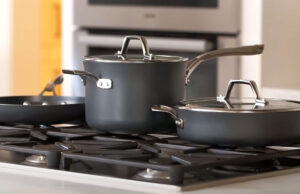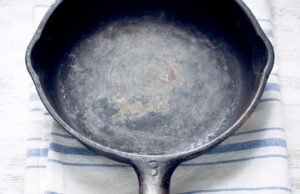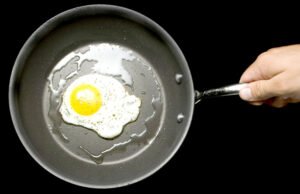As an Amazon Associate, I earn from qualifying purchases at no extra cost to you.
G4977SCVISS Miele Dishwasher Troubleshooting – Fix It Fast
Are you struggling with your G4977SCVISS Miele dishwasher not working properly? Don’t worry, you are not alone. Many people face common issues that can stop this powerful machine from running smoothly. In this article, we will dive deep into simple, easy-to-follow solutions. You will learn exactly how to troubleshoot problems, save money, and get your dishwasher back to perfect working order quickly and efficiently.
Ultimate Guide to G4977SCVISS Miele Dishwasher Troubleshooting
Understanding Power and Connection Issues
Sometimes your Miele dishwasher may not turn on, which can be very frustrating. First, check if it is properly plugged into the power socket. Even a small loose connection can stop it from working. Make sure the power outlet itself is functioning by testing it with another device.
Next, inspect the dishwasher’s power cord for damage. If you see frayed wires or cuts, it is unsafe to use the machine. You may need a qualified technician to replace it. Also, check your home circuit breaker. Sometimes the dishwasher trips the breaker if it draws too much power or if there is a short circuit.
Another reason for power issues could be the internal fuse in the dishwasher. Miele dishwashers often have built-in protection to prevent electrical damage. If the fuse is blown, the machine will not start. Consult your user manual to locate the fuse, and replace it carefully.
Always keep safety in mind when handling electrical parts. Never touch wires with wet hands and ensure the power is turned off before checking anything inside. These simple checks can save you time, money, and stress.
- Ensure dishwasher is plugged in securely
- Test the power outlet with another device
- Inspect the power cord for damage
- Check the home circuit breaker
- Replace the internal fuse if necessary
Solving Water Supply Problems
If your dishwasher does not fill with water, it will not function. Begin by checking the water supply valve. Make sure it is fully open, and water is flowing properly. Sometimes, the valve may get stuck or blocked.
Next, examine the water inlet hose. Kinks, twists, or blockages in the hose can stop water from entering the machine. Detach the hose and flush it to clear any debris. You can also inspect the filter inside the hose connection. Small particles often clog this part, restricting water flow.
If water still does not enter, the water inlet valve may be defective. This valve controls water entering the dishwasher and can fail over time. Replacing it usually requires a professional technician, but sometimes cleaning it is enough.
Remember, water problems can cause other issues like poor cleaning or error codes. Regular checks on hoses, valves, and filters prevent major damage. Maintaining a clean and clear water path ensures your dishwasher runs smoothly.
- Confirm water supply valve is fully open
- Inspect and straighten the water inlet hose
- Clean the hose filter from debris
- Replace or repair faulty water inlet valve
- Regularly maintain water connections
Fixing Drainage and Pump Issues
When your dishwasher does not drain, water remains at the bottom, causing smell and mess. Begin by checking the drain hose. Make sure it is not bent or clogged. Remove it carefully and flush it with water.
Next, inspect the dishwasher filter. Food debris can block the filter and stop water from draining. Take out the filter, rinse it under running water, and clear all trapped particles. Make sure it is properly placed back afterward.
The pump may also be blocked or damaged. A faulty pump cannot push water out efficiently. Check for objects like broken glass or food scraps that may jam the pump. If the pump is damaged, it usually needs replacement by a technician.
Proper drainage prevents water from pooling, keeps dishes clean, and avoids bad odors. Always clean the filter and hoses regularly, and inspect the pump if drainage slows down. Small steps here save big repair costs later.
- Check drain hose for clogs or bends
- Remove and clean dishwasher filter
- Inspect the pump for blockages
- Replace damaged pump if necessary
- Clean hoses and filter regularly
Handling Cleaning Performance Problems
Poor cleaning results can be frustrating, especially if dishes come out dirty. Begin by checking spray arms. Ensure they are not blocked with food particles or mineral deposits. Remove and rinse them carefully.
Next, use the right detergent and correct quantity. Too little detergent does not clean well, and too much can leave residue. Also, check the rinse aid level. Rinse aid improves drying and prevents streaks. Refill if necessary.
Water temperature is another important factor. Miele dishwashers require hot water for proper cleaning. Make sure your water heater is set to at least 120°F (49°C). Low water temperature can result in greasy or spotty dishes.
Regular maintenance, such as cleaning filters and spray arms, ensures consistent cleaning performance. Following these steps helps your dishwasher operate efficiently and your dishes come out sparkling every time.
- Inspect and clean spray arms
- Use proper detergent and amount
- Check rinse aid level
- Ensure hot water supply
- Maintain filters and arms regularly
Addressing Door and Seal Problems
A dishwasher door that does not close or leaks can cause serious issues. First, examine the door latch. Ensure it is not broken or misaligned. If the latch is faulty, the machine may not start.
Next, check the door seal or gasket. Over time, seals can wear out, crack, or get dirty. Clean the seal with a soft cloth and warm water. If damaged, replace it immediately to prevent leaks.
Sometimes hinges or springs may become loose, preventing the door from closing properly. Tighten any screws or parts carefully. Make sure nothing blocks the door when closing it.
Regular inspection of door components prevents leaks and keeps your dishwasher running safely. A secure, tight door is essential for both performance and safety.
- Inspect door latch for damage
- Clean and check door seal
- Replace worn or cracked gaskets
- Tighten door hinges and screws
- Ensure nothing blocks door closure
Dealing with Error Codes and Indicators
Modern Miele dishwashers display error codes when something is wrong. Understanding these codes helps troubleshoot efficiently. Start by checking the user manual for the meaning of each code.
Common codes include water supply issues, drainage problems, or heating errors. Once you know the code meaning, follow the relevant solution steps. This approach saves time and prevents unnecessary repairs.
Resetting the dishwasher can sometimes clear minor errors. Turn the machine off, wait a few minutes, and switch it back on. If the error persists, inspect the affected components or call a technician.
Monitoring error codes keeps your dishwasher running smoothly and prevents major breakdowns. Learning the codes also builds confidence in handling minor problems at home.
- Refer to user manual for error codes
- Follow solution steps for each code
- Reset dishwasher to clear minor errors
- Inspect affected components
- Call a technician if error persists
| Problem Area | Quick Check | Common Cause | Easy Fix |
|---|---|---|---|
| Power Issue | Plug, cord, breaker | Loose connection, blown fuse | Secure plug, replace fuse |
| Water Supply | Valve, hose, filter | Blockage, closed valve | Open valve, clean hose/filter |
| Drainage | Hose, filter, pump | Clog, damaged pump | Clean hose/filter, replace pump |
| Cleaning Performance | Spray arms, detergent, water temp | Blocked spray arms, low temp | Clean arms, adjust detergent, check water temp |
| Door & Seal | Latch, gasket, hinges | Worn seal, misaligned latch | Replace gasket, adjust latch |
| Error Codes | Manual, reset | Water, drainage, heating | Follow manual, reset, call technician |
Common Maintenance Tips You Must Know
Regular maintenance prevents breakdowns and extends your dishwasher’s life. Always clean the filter after every few cycles to remove trapped food. A clean filter ensures water flows freely.
Check the spray arms monthly. Remove them and rinse under running water. Tiny holes can get blocked with debris, affecting cleaning performance. Also, inspect the door seal and clean it gently with warm water.
Using the correct detergent is vital. Always follow the manufacturer’s instructions. Overusing detergent can cause buildup, while underusing can leave dishes dirty. Maintain proper rinse aid levels for better drying.
Keep hoses and connections free from bends or kinks. Check for leaks regularly. Proper maintenance not only improves performance but also prevents costly repairs. A little care goes a long way.
- Clean filter regularly
- Rinse spray arms monthly
- Use correct detergent and rinse aid
- Inspect door seal and hoses
- Check for leaks
Understanding Dishwasher Cycles and Functions
Miele dishwashers come with several cycles. Choosing the correct cycle improves cleaning and saves energy. For example, heavy-duty cycles are for pots and pans, while eco cycles save water and energy.
Learn each cycle’s purpose by reading the manual. Some cycles use higher temperatures, while others are gentle on delicate items. Matching the cycle to your load ensures dishes are cleaned efficiently.
Use additional functions like “extra dry” or “short cycle” only when needed. Overusing these features can waste water or energy. Proper use of cycles enhances the dishwasher’s lifespan.
Check for cycle completion before opening the door. Interrupting mid-cycle may reduce cleaning performance and trigger errors. Understanding cycles allows smooth operation and better results.
- Choose correct cycle for load type
- Read manual for each cycle function
- Use extra functions only when necessary
- Avoid interrupting cycles
- Monitor load performance
Common Signs of Dishwasher Wear and Tear
Over time, parts wear out due to regular use. Listen for unusual noises, which may indicate pump or motor issues. Inspect spray arms and racks for damage or rust.
Leaks or water pooling may indicate a failing door seal or worn-out gasket. Check hoses for cracks or kinks. Water not heating properly could mean a faulty heating element.
Keep an eye on error codes, unusual smells, or poor cleaning performance. Early detection prevents costly repairs. Replace damaged parts promptly and maintain regular cleaning routines.
Regular monitoring ensures your dishwasher works efficiently and lasts longer. Paying attention to small signs saves money and avoids frustration.
- Listen for unusual noises
- Check spray arms, racks, and hoses
- Inspect door seal and gaskets
- Monitor error codes and smells
- Replace worn-out parts promptly
When to Call a Professional Technician
Some issues require expert help. Electrical problems, faulty pumps, or heating element failures are not safe to fix yourself. Calling a professional ensures proper repair.
Even with simple issues, a technician can save time and prevent mistakes. Miele-certified technicians know the machine and have the right tools. They also ensure safety and warranty compliance.
Document any error codes or unusual signs before calling. This helps the technician diagnose the problem faster. Sometimes, preventive maintenance visits prevent major breakdowns.
Professional assistance ensures your dishwasher continues to perform like new. Knowing when to call a technician is crucial for safety, efficiency, and peace of mind.
- Electrical issues need professional help
- Faulty pumps or heating elements require expert repair
- Document error codes for technician
- Preventive maintenance avoids major breakdowns
- Ensure safety and warranty compliance
Frequently Asked Questions (FAQs)
Is it normal for my dishwasher to make loud noises?
Yes, some noise is normal, but excessive sounds may indicate a problem. Check for loose items in the spray arms or racks. Objects like utensils or broken glass can cause rattling.
Also, inspect the pump or motor area. Over time, debris may enter, causing unusual noises. Regular cleaning prevents this. If the noise continues, it may require professional inspection to avoid damage.
Can I use any detergent in my Miele dishwasher?
No, it’s important to use Miele-approved or high-quality dishwasher detergent. Other detergents may not dissolve properly and can leave residue. Incorrect detergents may also damage internal components over time.
Always follow the dosage instructions. Too little detergent reduces cleaning, while too much can leave streaks. Using the correct detergent ensures sparkling dishes and prolongs your dishwasher’s life.
Do I need to clean the filter every day?
Not every day, but it should be cleaned regularly, depending on usage. For heavy use, weekly cleaning is ideal. A clogged filter reduces water flow, leaving dishes dirty.
Remove the filter, rinse it under warm water, and remove trapped debris. Proper filter maintenance prevents blockages, improves cleaning, and keeps your dishwasher running efficiently.
Is it safe to check the internal fuse myself?
Yes, if you have basic knowledge of electrical safety. Always turn off the power before opening the dishwasher. Avoid touching wires with wet hands.
If the fuse is blown, replace it with the exact type specified in the manual. If unsure, it’s safer to call a qualified technician to avoid accidents or further damage.
Can low water temperature affect cleaning?
Absolutely. Miele dishwashers require hot water, ideally around 120°F (49°C). Cold water reduces detergent effectiveness and may leave dishes greasy or dirty.
Ensure your water heater is set correctly. If temperature remains low, the dishwasher may need inspection. Hot water ensures proper cleaning, drying, and hygiene.
Do I need to check hoses regularly?
Yes, hoses can get kinked, blocked, or leak over time. Inspect them monthly for cracks or bends. Proper water flow prevents drainage issues and ensures efficient washing.
Replacing damaged hoses early prevents leaks and major water damage. Regular checks are a simple step to avoid costly repairs and maintain optimal dishwasher performance.
Is it okay to use extra rinse functions frequently?
Using extra rinse occasionally is fine, but frequent use can waste water and energy. Use it only when necessary, such as for heavily soiled dishes.
Following recommended cycles keeps energy use low and maintains cleaning efficiency. Overusing extra functions may also shorten the machine’s lifespan over time.
Can a faulty door seal cause error codes?
Yes, a damaged or misaligned door seal can trigger errors. Water may leak, and sensors detect issues. Check the seal for cracks or dirt.
Clean or replace the seal as needed. A secure seal ensures safety, proper cleaning, and prevents error codes from appearing. Regular inspection avoids future problems.
Final Thoughts
The G4977SCVISS Miele dishwasher is reliable, but small issues can disrupt its performance. By following these troubleshooting tips and regular maintenance, you can keep it running perfectly. Regular checks, cleaning, and understanding error codes save money and time. A little care ensures sparkling dishes, efficient cycles, and a long-lasting dishwasher. Take charge, and enjoy hassle-free dishwashing every day.




